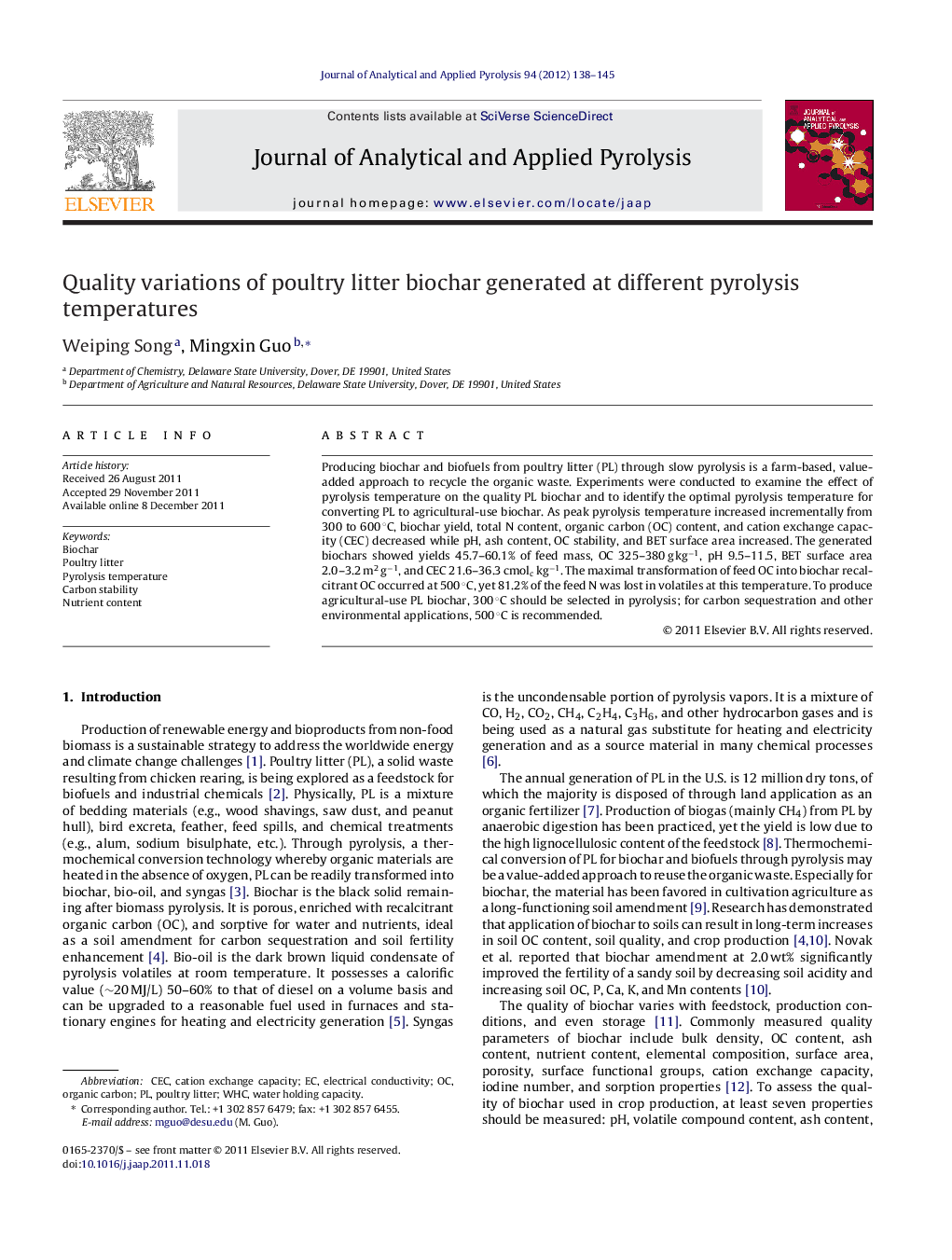| Article ID | Journal | Published Year | Pages | File Type |
|---|---|---|---|---|
| 1197432 | Journal of Analytical and Applied Pyrolysis | 2012 | 8 Pages |
Producing biochar and biofuels from poultry litter (PL) through slow pyrolysis is a farm-based, value-added approach to recycle the organic waste. Experiments were conducted to examine the effect of pyrolysis temperature on the quality PL biochar and to identify the optimal pyrolysis temperature for converting PL to agricultural-use biochar. As peak pyrolysis temperature increased incrementally from 300 to 600 °C, biochar yield, total N content, organic carbon (OC) content, and cation exchange capacity (CEC) decreased while pH, ash content, OC stability, and BET surface area increased. The generated biochars showed yields 45.7–60.1% of feed mass, OC 325–380 g kg−1, pH 9.5–11.5, BET surface area 2.0–3.2 m2 g−1, and CEC 21.6–36.3 cmolc kg−1. The maximal transformation of feed OC into biochar recalcitrant OC occurred at 500 °C, yet 81.2% of the feed N was lost in volatiles at this temperature. To produce agricultural-use PL biochar, 300 °C should be selected in pyrolysis; for carbon sequestration and other environmental applications, 500 °C is recommended.
► The peak temperature of slow pyrolysis determines the yield and quality of poultry litter biochar. ► Elevating the pyrolysis temperature in 300–600 °C decreased the yield of poultry litter biochar. ► Organic carbon (OC) content, total N, and cation exchange capacity of the product also decreased. ► While pH, ash content, OC stability, and BET surface area of the product increased. ► 300 °C (not exceeding 500 °C) is recommended to pyrolyze poultry litter into agriculture-use biochar.
